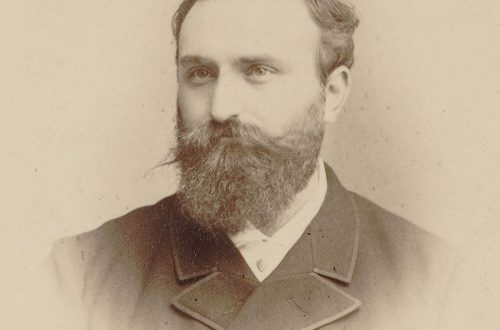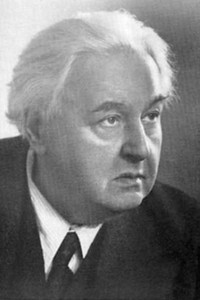
Vytautas Prano Barkauskas (Vytautas Barkauskas) |
Vytautas Barkauskas
One of the leading masters of contemporary musical culture in Lithuania, V. Barkauskas, belongs to the generation of Lithuanian composers who made themselves known in the 60s. as “troublemakers”, turning to a new imagery, a new, sometimes shocking avant-garde language. From the very first steps, Barkauskas became one of the leaders of the young, but already in his early works this new was never imposed, but acted in close contact with the traditional, completely obeying the artistic design. Throughout his creative career, Barkauskas’ style changed flexibly – genre accents and techniques changed, but the fundamental features remained unchanged – deep content, high professionalism, a strong fusion of the emotional with the intellectual.
The composer’s heritage includes virtually all genres: stage (the opera The Legend of Love, the choreographic stage Conflict), symphonic and chamber music (including 5 symphonies, the Three Aspects triptych, 3 concertos, Monologue for oboe solo, Partita for solo violin, 3 violin sonatas, 2 string quartets, Quintet and Sextet for strings with piano), choirs, cantatas and oratorios, vocal lyrics (on the lines of P. Eluard, N. Kuchak, V. Palchinskaite), organ and piano compositions (including for 4, 6 and 8 hands), music for theater and cinema. Barkauskas pays great attention to the children’s repertoire.
The first music lessons began at home, then – at the piano department of the music school. Y. Tallat-Kyalpshi in Vilnius. However, the composer did not immediately find his vocation, he received his first profession at the Faculty of Physics and Mathematics of the Vilnius Pedagogical Institute (1953). Only after that did Barkauskas decide to dedicate himself completely to music – in 1959 he graduated from the Vilnius Conservatory in the class of the outstanding composer and teacher A. Raciunas.
In the first creative decade, Barkauskas’ music was most marked by the spirit of experimentation, the use of various composing techniques (atonalism, dodecaphony, sonoristics, aleatorics).
This was most clearly revealed in the leading genre of the 60s. – in chamber music, where, along with modern methods of composition, the neoclassical tendencies characteristic of this period of Soviet music (clear constructiveness, transparency of presentation, gravitation towards polyphony) were also interestingly implemented. The most close to the masters of the past to Barkauskas was the principle of concert performance – a kind of playing with timbres, dynamics, virtuoso techniques, various types of thematics. These are his Concertino for four chamber groups (1964), “Contrast music” for flute, cello and percussion (1968), “Intimate composition” for oboe and 12 strings (1968), which belong to the best created by the composer. And later, Barkauskas did not part with the concert genre (Concertos for organ “Gloria urbi” – 1972; flutes and oboes with orchestra – 1978; Three concert etudes for piano – 1981).
Particularly significant is the Concerto for viola and chamber orchestra (1981), a milestone work that sums up previous searches and emphasizes the emotional, romantic beginning, which intensifies in the composer’s work over time. At the same time, the language becomes more accessible and clear, the former graphic quality is now increasingly combined with colorful sound. All these features testify to the constant desire of Barkauskas to synthesize expressive means, to deepen the content. Even in the early period, the composer turned to civil, generally significant themes – in the cantata-poem “The Word of the Revolution” (on the st. A. Drilinga – 1967), in the “Promemoria” cycle for two flutes, bass clarinet, piano, harpsichord and percussion ( 1970), where he touches on the military theme for the first time. Later, Barkauskas repeatedly returned to it, giving her dramatic concept a more monumental symphonic form – in the Fourth (1984) and Fifth (1986) symphonies.
Like many other Lithuanian composers, Barkauskas is seriously interested in his native folklore, combining its language with modern means of expression in a unique way. One of the most interesting examples of such a synthesis is the symphonic triptych Three Aspects (1969).
After graduating from the conservatory, along with the work of Barkauskas, he is engaged in educational and pedagogical activities – he works at the Vilnius Music College. J. Tallat-Kelpsy, at the Republican House of Folk Art, teaches theory (since 1961) and composition (since 1988) at the Lithuanian State Conservatory. The composer is known not only at home, but also abroad. Explaining the idea of one of his latest compositions, Barkauskas wrote: “I was thinking about Man and his fate.” Ultimately, this theme determined the main search for the Lithuanian artist.
G. Zhdanova





